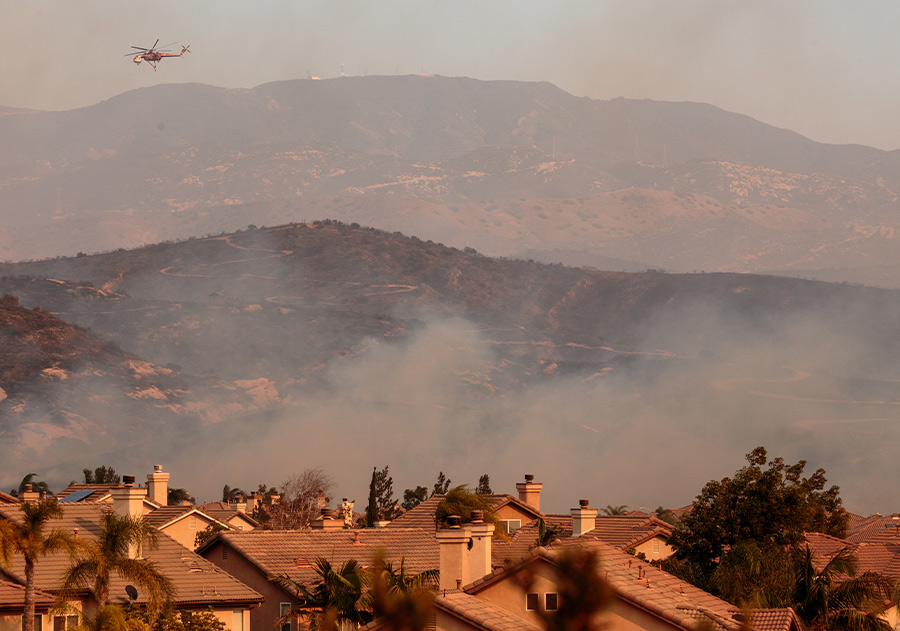In 2024, Ten Strands partnered with the California Collaborative for Educational Excellence and UndauntedK12 to support district and county leaders with resources and tools for managing the impacts of a changing climate to adapt and become climate resilient. This partnership highlighted practices and tools for managing climate impacts by leading districts and county offices of education through webinar learning sessions and case study spotlights. The findings and resources were summarized in a brief, “Climate Adaptation and Resilience at California’s K–12 Schools: Actions and Recommendations for State and District Leadership.”
“School boards and district leaders across the state must plan for the future and decide how to invest resources to improve local school facilities,” the brief states. “There is a critical need and opportunity for leadership at the state, county, and local levels to align existing dollars with statewide goals to address extreme heat and adapt to the impacts of climate change. Without clear direction, districts could continue dispersing billions on outdated technologies and stop-gap measures. If they do, then students and communities will suffer preventable harms to their education progress and quality of life.”
According to the brief, “by 2045, more than one of every three California students will live in a community with at least 120 days of high heat — defined as days over 87 degrees or over the local high-heat threshold — practically ensuring disruption to the school calendar.”
In addition to providing air conditioning systems, recommendations to deal with high heat include applying reflective material or lighter-colored roofing to reduce buildings’ heat absorption, installing external shades and awnings, and replacing asphalt with natural landscaping.
Wildfires/smoke: The majority of California school districts today are at moderate or high risk for wildfires, and evidence-based models suggest that by 2050, smoke pollution will be 50 percent greater than in 2020. Wildfire smoke is extremely toxic to children and can lead to a decrease in test scores, in part due to lost learning days when schools close due to unsafe air quality. Wildfire smoke now drives the vast majority of school closures in California, according to the brief.

Storms/flooding: Big storms can wreak havoc on school grounds if they do not drain well. Landslides from rainfall after wildfires can impede paths to schools. Both can cause damage to buildings and school grounds. Recommendations to manage flooding in schools include investing in green infrastructure or rain gardens, ranging from small- to large-scale projects that naturally absorb water during heavy storms and mitigate the effects of flooding.
Grid instability: The accumulation of the previous factors including storms, flooding and extreme heat that may lead to wildfires threaten the stability of energy grids. “With longer and more frequent power outages, California can expect increased risk to schools, including unhealthy or unsafe learning conditions, and closures that disrupt learning,” the brief states. Power outages can affect access to schools if they don’t have backup power, cause safety issues if fire alarms are not functional and logistical issues like use of working bathrooms.
Recommendations to stabilize energy grids include installing on-site solar generation with battery storage that can prevent grid outages from affecting school buildings. When paired with smart energy management systems, a local “microgrid” can tier power for critical loads, enabling schools to withstand both short- and long-term outages.
The brief also includes recommendations at the state level, including:
- Funding for district planning to build climate resilience into school infrastructure and operations.
- Support for technical assistance to help districts effectively implement resilience strategies.
- Interagency coordination to ensure K-12 schools have access to the resources and expertise needed to adapt to climate impacts.
In addition to these statewide recommendations, LEA-centered recommendations include:
- Passing school board policy that directs capital planning and facilities funding to be deployed in ways that support climate adaptation and resilience to current and projected local impacts.
- Understanding your area’s current and projected climate vulnerabilities, and ensure your emergency preparedness, response and recovery plans address these specific threats.
- Updating existing facilities master plans with an understanding of the current and projected local climate impacts and plans to improve resilience and adaptation.
- Collaborating with your city and county on bringing schools into existing plans for climate adaptation, stormwater management, extreme heat, wildfires and grid resilience.
The brief is accompanied by a toolkit for school district leaders with resources for how they can adapt school buildings and grounds to be resilient to the impacts of climate change. Access the brief and toolkit at bit.ly/4jetNBi.